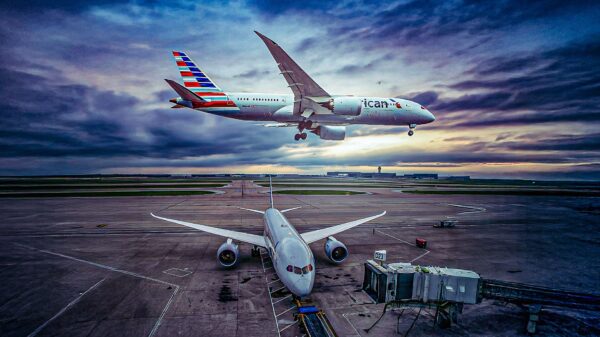More than 3,700 airports worldwide are operating scheduled passenger flights in October 2025, with the ten busiest airports collectively handling over 16,400 daily movements, which include takeoffs and landings. Notably, Chicago O’Hare has topped the rankings, surpassing Atlanta for the first time in over a year. This shift marks a significant change in airport traffic dynamics, with one in six global flights originating from or arriving at these ten airports.
Key Rankings and Movements
The latest data highlights the following daily movements at the world’s busiest airports:
– Chicago O’Hare: 2,418 movements, a 14% increase compared to October 2024, moving up one place.
– Atlanta: 2,153 movements, up by 1%, but down one position.
– Dallas/Fort Worth: 1,985 movements, a 2% decrease, maintaining its rank.
– Denver: 1,898 movements, rising by 3%, keeping its position.
– Guangzhou: 1,514 movements, up 11%, moving up three places.
– Istanbul Airport: 1,474 movements, a new entry in the top ten with a 15% increase.
– Shanghai Pudong: 1,468 movements, increasing by 7%, remaining in the same position.
– Charlotte: 1,426 movements, down 8%, falling three spots.
– Los Angeles International: 1,393 movements, a 2% decrease, also down three places.
– London Heathrow: 1,339 movements, unchanged, dropping one position.
This month’s rankings differ significantly from previous data, particularly with Tokyo Haneda no longer appearing in the top ten, having been replaced by the rapidly expanding Istanbul Airport.
Factors Behind O’Hare’s Success
Chicago O’Hare’s rise can be attributed to several factors influencing its traffic growth. It has emerged as a hub for both American Airlines and United Airlines, facilitating a robust network of flights. The airport is recognized as the leading global airport for regional jets, contributing to its high movement rate. In October alone, O’Hare is expected to handle 2,418 daily passenger movements, a significant jump from 2,124 in the same month last year.
The surge in traffic at O’Hare is largely driven by American Airlines, which has increased its flights by an astonishing 25% year-on-year. In contrast, United Airlines has seen a more modest growth of 11%, although it remains the dominant operator at the airport. Despite this growth, American Airlines faces challenges, reporting an estimated annual loss of $800 million at its Chicago hub.
American Airlines has strategically added 20 new routes from O’Hare this October, expanding its network to destinations including Akron/Canton, Anchorage, and Mexico City. Notably, while the airline has focused on growth at O’Hare, its operations remain 6% below pre-pandemic levels from October 2019.
This situation reflects a broader trend in the airline industry, where efforts to expand networks and regain market share are ongoing. As airlines navigate the complexities of recovery post-pandemic, the competition among major airports will likely intensify.
With these developments, Chicago O’Hare is poised to maintain its status as a leader in air traffic, while the landscape of global air travel continues to evolve.







































































